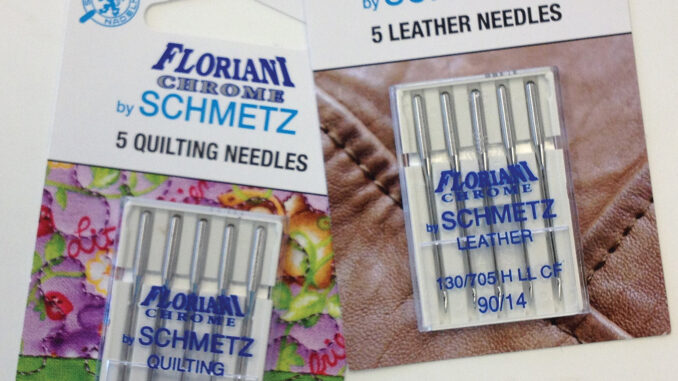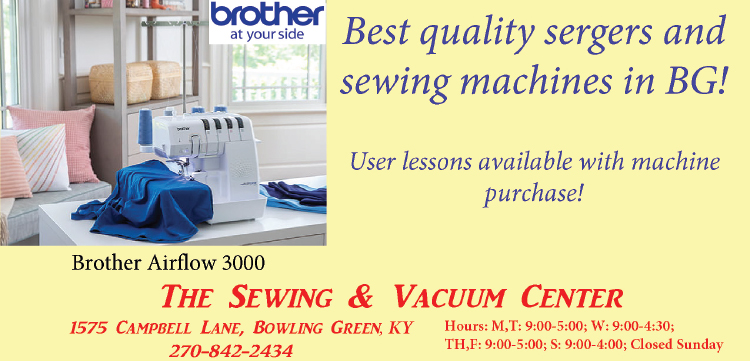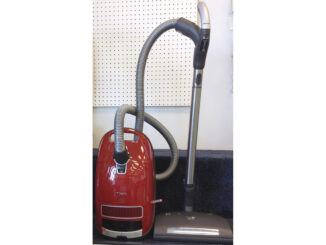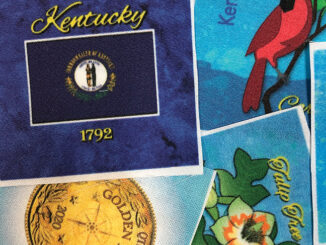
Selecting the right needle for your machine and sewing project will go a long way to ensure great stitching! There are many different types of needles available, as well as brands of needles. Choosing the correct needle for your fabric and thread type can help to ensure successful stitching.
For many of us, we change a needle only when it breaks. Needles should be changed, generally, every 6-8 hours of sewing time. Machine embroiderers and quilters may find themselves changing more frequently as stitching a dense embroidery design or quilting through the layers of top, batting, and batting can dull needles quickly. Your machine will often “tell” you when it’s time to change a needle; it’s my first troubleshooting remedy when the machine misbehaves. If you experience any of the following, it’s time for a needle change:
- Broken or shredded threads
- Skipped or uneven stitches
- Puckered or damaged fabrics
- Popping or clicking sound from machine in bobbin area
The sewing machine needle has several parts:
Butt: the beveled end of the needle top that allows easy insertion into the needle bar.
Shank: top part of the needle that fits into the needle holder on the sewing machine. The shank can have one flat side (most modern machines have this), or round (early machines and commercial used this). Check your owner’s manual for how the needle fits. On most machines, the flat side faces the back of the machine although there a few exceptions to this. (***Singer sewing machine needles are made with a different type of shank at the top and do not fit well in other models of machines. Use this needle with Singer sewing machines only.)
Shoulder: sloping area that transitions from the shank to the blade.
Blade with groove: center portion of the needle. This allows the thread to lay flat against the needle as a guide to the needle eye. The thread should be about 40% of the thickness of the blade (one reason for different needle sizes).
Scarf: small indent above the needle eye; helps to pick up and form the loop with the bobbin.
Needle point and eye: thread goes through the needle.
Machine needles are sized with two numbers: American and European. The larger number is the European and the small number is the American size. For example, 90/14 is the most commonly used needle size. The higher the number, the larger the needle, small number indicates a smaller needle.
Available needle types include:
Universal: have a slightly rounded needle point which is suitable for most general sewing including wovens and knits. Sizes range from 6/8 to 110/18.
Embroidery: Designed for machines with embroidery capability; will typically have a larger eye/groove to accommodate specialty threads and a ball point to avoid fabric damage.
Metallic: Use with threads that have metal in them; have a longer eye/special groove to prevent thread breakage and fraying.
Jeans: have very sharp point to penetrate thick denim fabrics; available in large sizes (100/16, 110/18) to handle thicker threads and fabrics.
Quilting: available in several sizes; have a slim point which is slightly rounded in order to penetrate fabric and batting layers when piecing/quilting by machine.
Stretch: designed with deep scarf to help prevent skipped stitches on knit or Lycra fabrics; work well on stretchy knits such as dancewear and swimwear.
Ballpoint: have rounded top to allow them to separate the knit loops when creating a stitch. Use these on most knits, lightweight to medium weight. These are available in a range of sizes.
Microtex: used with fine, densely woven fabric such as silk or woven microfibers; have a very fine point which reduces puckers and leaves a small hole in the fabric.
Specialty needles include twin, wing, leather, and topstitch. Each is designed for a specific use and may even require a special stitch on your machine to use.
For general sewing, you cannot go wrong using a 90/14 universal needle and if stitching issues occur, try changing your needle and rethreading the machine. Using the recommended needle for your machine and the type of sewing that you are doing will “keep you in stitches!”
We have a wide selection of machine needles to fit most home sewing machines and will be glad to help you select the right one to ensure your sewing success!
-submitted by The Sewing & Vacuum Center






Be the first to comment